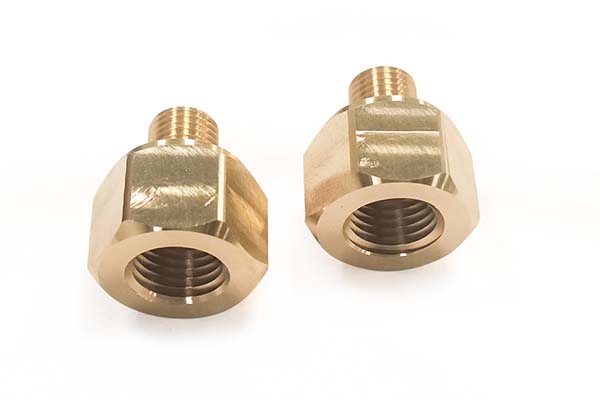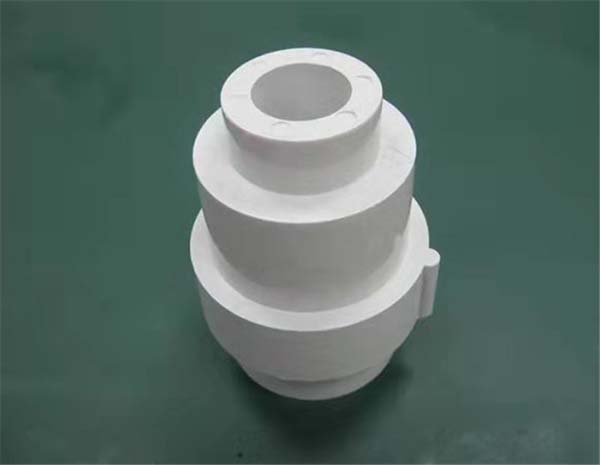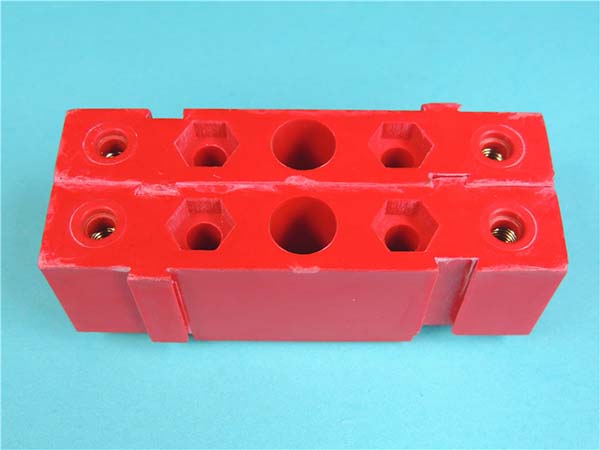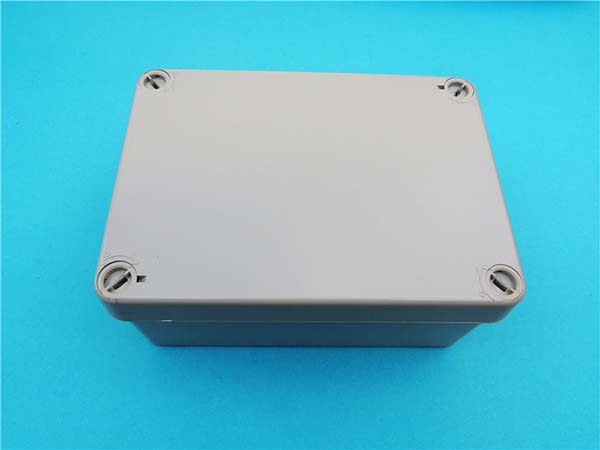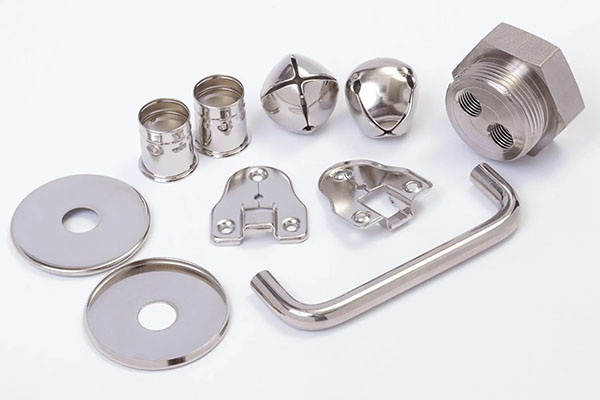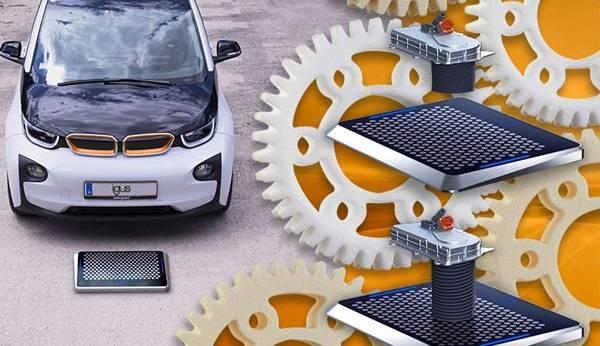1. Introduction
1.1 Definition of Metal Prototyping Services
Metal prototyping services involve the creation of preliminary models or samples of metal products through specific manufacturing processes. These processes can include CNC machining, 3D printing, casting, and forging. For example, in CNC machining, computer - controlled machines precisely carve and shape metal blocks according to pre - programmed designs, allowing for high - precision and complex geometries. 3D printing, on the other hand, builds metal prototypes layer by layer from metal powders or filaments, offering great flexibility in design and the ability to quickly produce unique shapes.
1.2 Significance for Businesses
For businesses, metal prototyping services are of utmost importance. In the early stages of product development, these services enable companies to test and refine their product concepts. A company developing a new metal - bodied smartphone can use metal prototyping to create a physical model. This prototype allows the design team to assess the ergonomics, such as how the phone feels in the hand, and the aesthetics, like the visual appeal of the metal finish.
Moreover, metal prototyping helps in reducing the risks associated with large - scale production. By creating prototypes first, companies can identify and fix design flaws, material compatibility issues, and manufacturing challenges before investing significant resources in full - scale production. This not only saves costs but also shortens the product development cycle, giving businesses a competitive edge in the market. According to a study by the Product Development and Management Association, companies that use prototyping in their product development process can reduce production costs by up to 40% and time - to - market by 30%.
2. Types of Metal Prototyping Services
2.1 CNC Machining
CNC (Computer Numerical Control) machining is a subtractive manufacturing process. It starts with a solid block of metal, such as aluminum, steel, or titanium. The process involves using pre - programmed computer software to control the movement of factory tools and machinery. For example, a CNC milling machine can move the cutting tool in multiple axes (X, Y, Z, and sometimes additional rotational axes) to carve away the excess material from the metal block, gradually creating the desired shape.
This method is highly accurate. In high - end CNC machining, the precision can reach up to ±0.001 inches (±0.0254 mm). Aluminum is a popular choice for CNC machining due to its relatively low cost, high strength - to - weight ratio, and excellent machinability. Steel, on the other hand, is chosen for applications that require high strength and durability, such as in the automotive and aerospace industries.
2.2 3D Printing
In metal 3D printing, also known as additive manufacturing, the process builds a metal prototype layer by layer. There are different technologies under metal 3D printing, such as Selective Laser Melting (SLM) and Electron Beam Melting (EBM).
For instance, in SLM, a high - power laser is used to selectively melt and fuse metal powder particles together according to the cross - sectional shape of the 3D model at each layer. This allows for the creation of highly complex geometries that are difficult or impossible to achieve with traditional manufacturing methods.
One of the significant advantages of 3D printing in metal prototyping is its ability to quickly produce a prototype. A simple metal prototype can be printed within a few hours to a day, depending on its size and complexity. It also enables the production of parts with internal cavities, lattice structures, and intricate details, which can be crucial for applications like lightweight component design in aerospace or customized medical implants.
2.3 Sheet Metal Fabrication
Sheet metal fabrication is a process that involves shaping, cutting, and assembling thin metal sheets. The process usually starts with cutting the metal sheet to the desired size and shape using methods like laser cutting or punching. For example, a laser cutter can precisely cut a flat sheet of stainless - steel or aluminum into complex 2D shapes.
After cutting, the metal pieces are often bent using a press brake to create the 3D form. Welding or riveting is then used to join the individual parts together. This process is commonly used in the production of electronic device enclosures, automotive body panels, and architectural components. For example, the outer shell of a laptop is often made through sheet metal fabrication. It offers advantages such as cost - effectiveness for large - volume production of simple - to - moderately complex parts, and the ability to work with a wide range of metals, including mild steel, stainless steel, and aluminum.
3. Key Factors to Consider When Choosing Metal Prototyping Services
3.1 Material Options
When selecting metal prototyping services, the choice of materials is crucial. Common metal materials used in prototyping include aluminum, steel, titanium, and copper.
- Aluminum: It has a low density, which makes it lightweight, with a density of about 2.7 g/cm³. It offers a high strength - to - weight ratio, making it suitable for applications where weight is a concern, such as in the aerospace and automotive industries. For example, in aircraft manufacturing, aluminum alloys are widely used in the construction of wings and fuselages. It also has good corrosion resistance due to the formation of a thin oxide layer on its surface when exposed to air. This oxide layer protects the underlying metal from further oxidation, making it suitable for outdoor applications.
- Steel: Steel is an alloy of iron and carbon, with a high carbon content contributing to increased strength and hardness. Carbon steel, for instance, has a carbon content ranging from 0.05% - 2.1% by weight. It offers high strength and durability, making it ideal for applications that require robustness, like in the construction of bridges, buildings, and heavy - duty machinery parts. However, its corrosion resistance is relatively low compared to some other metals, especially in humid or corrosive environments. But stainless steel, which contains chromium (usually at least 10.5%) and sometimes other elements like nickel, has excellent corrosion resistance due to the formation of a passive chromium oxide film on its surface.
- Titanium: Titanium is known for its high strength, even at elevated temperatures. It has a density of about 4.5 g/cm³, which is higher than aluminum but lower than many steels. It offers exceptional corrosion resistance, making it suitable for use in harsh environments, such as in the marine and chemical industries. In the medical field, titanium is used for implants due to its biocompatibility, meaning it does not cause an adverse reaction when in contact with living tissue.
- Copper: Copper has excellent electrical and thermal conductivity. It is widely used in electrical applications, such as in the production of wires and electrical components. It also has good corrosion resistance in many environments, especially in non - oxidizing acids and in dry air. In some decorative applications, its attractive color and malleability make it a popular choice.
3.2 Precision and Tolerance
Precision and tolerance are important considerations in metal prototyping. Precision refers to how close the actual dimensions of the prototype are to the desired dimensions specified in the design. Tolerance, on the other hand, is the allowable deviation from the specified dimensions.
For example, in a high - precision mechanical part, the tolerance might be specified as ±0.01 mm. This means that the actual dimension of the part can be either 0.01 mm larger or 0.01 mm smaller than the nominal dimension and still be considered acceptable.
Here is a comparison of the precision achievable by different metal prototyping services:
| Prototyping Service | Typical Precision Range |
| High - end CNC Machining | ±0.001 - 0.01 inches (±0.0254 - 0.254 mm) |
| 3D Printing (Metal) | ±0.005 - 0.02 inches (±0.127 - 0.508 mm) |
| Sheet Metal Fabrication | ±0.01 - 0.05 inches (±0.254 - 1.27 mm) |
It's important to note that these are general ranges, and the actual precision can vary depending on factors such as the complexity of the design, the type of equipment used, and the skill of the operators.
3.3 Cost - effectiveness
The cost - effectiveness of metal prototyping services is influenced by several factors.
- Material Cost: As mentioned before, different metals have different costs. For example, titanium is generally more expensive than aluminum or steel due to its complex extraction and processing methods. The cost of the base metal, such as the price per kilogram of aluminum, steel, or titanium, directly impacts the overall cost of the prototype. Additionally, if a particular alloy or a high - purity grade of the metal is required, it can further increase the material cost.
- Process Complexity: Prototyping processes like 3D printing with complex geometries may require more time and specialized equipment, increasing the cost. In CNC machining, if the design involves intricate details, deep cavities, or multiple axes of movement, it can lead to longer machining times and higher costs. For instance, a part with a large number of small holes or internal channels will take more time to machine, thus increasing the labor and machine - time costs.
- Volume of Production: For small - batch prototyping, the cost per unit may be higher due to the setup costs associated with each production run. However, as the volume increases, the cost per unit can decrease due to economies of scale. For example, setting up a CNC machine for a single - part prototype may have a high initial cost, but when producing 100 parts, this setup cost is spread over a larger number of units, reducing the cost per part.
To achieve cost - effectiveness, consider the following suggestions:
- Optimize Design: Simplify the design as much as possible without sacrificing functionality. Avoid unnecessary features or complex geometries that may increase production costs. For example, reducing the number of sharp corners or complex curves can make the manufacturing process easier and less time - consuming.
- Material Selection: Choose the most suitable material for the application based on its properties and cost. If the application does not require the high strength of titanium, for example, a more cost - effective alternative like aluminum or steel may be sufficient.
- Compare Quotes: Obtain quotes from multiple prototyping service providers to ensure you are getting the best price for the required quality and specifications. Different providers may have different cost structures based on their equipment, labor costs, and business models.
4. Yigu Technology's Perspective
As a non - standard plastic metal products custom supplier, Yigu Technology has unique insights into metal prototyping services.
Material Innovation: Yigu Technology focuses on the innovative use of materials. For example, they are constantly exploring new metal alloys. By combining different metal elements in precise ratios, they can create materials with enhanced properties. This allows them to offer prototypes with better strength - to - weight ratios or improved corrosion resistance compared to traditional materials, meeting the specific and often demanding requirements of their clients.
Process Optimization: The company emphasizes process optimization. They use advanced simulation software to analyze the metal prototyping process before actual production. This helps them predict potential issues such as stress concentrations or uneven material flow during processes like casting or forging. By making adjustments based on these simulations, they can improve the quality of the prototypes, reduce the occurrence of defects, and also save time and cost by minimizing the need for rework.
In short, Yigu Technology's approach to metal prototyping services is centered around innovation and optimization, aiming to provide high - quality and cost - effective solutions for their customers.
5. FAQ
5.1 What is the typical turnaround time for metal prototyping?
The typical turnaround time for metal prototyping can vary significantly depending on several factors. For simple metal prototypes made through 3D printing, it can be as short as a few hours to a couple of days. For example, a small, relatively simple aluminum part printed using Selective Laser Melting might be completed within 24 - 48 hours.
However, for more complex prototypes made by CNC machining or casting, the process usually takes longer. CNC machining of a complex metal component with tight tolerances may take 5 - 10 business days. This is because CNC machining involves multiple steps such as programming the machine, setting up the tools, and the actual machining process, which can be time - consuming, especially for parts with intricate geometries. Casting processes, which include creating molds, pouring the metal, and post - processing, can take even longer, often 7 - 14 days, due to the need for mold preparation and the solidification time of the metal.
5.2 Can I get a small - batch production after prototyping?
Yes, in most cases, you can get small - batch production after prototyping. Once the prototype has been tested and approved, the prototyping service provider can use the same manufacturing process or make minor adjustments to scale up production for a small - batch run.
The process usually starts with finalizing the design based on the prototype's test results. Then, the production plan is adjusted to account for the increased quantity. For example, in CNC machining, tooling may need to be optimized for longer - run production, and in 3D printing, the build parameters may be fine - tuned for consistent quality across multiple parts. The service provider will also conduct quality control checks on each part in the small - batch production to ensure they meet the required standards, just like they did for the prototype.
5.3 How do you ensure the quality of metal prototypes?
Quality assurance in metal prototyping is achieved through a combination of advanced techniques and strict quality control systems. First, we use high - precision measuring equipment, such as coordinate measuring machines (CMMs). CMMs can accurately measure the dimensions of the prototype with an accuracy of up to ±0.001 mm, ensuring that the part meets the specified design tolerances.
Second, we have a comprehensive quality control system in place. This includes in - process inspections during the manufacturing process. For example, in CNC machining, the machined parts are inspected at various stages to catch any potential issues early. After the prototype is completed, a final inspection is carried out, which may include visual inspections for surface quality, as well as functional tests if applicable. Additionally, we follow industry - recognized standards and best practices, such as ISO 9001, to ensure consistent quality in all our metal prototyping services.

